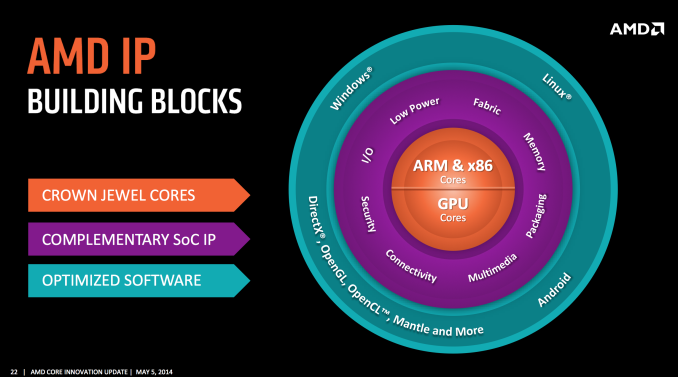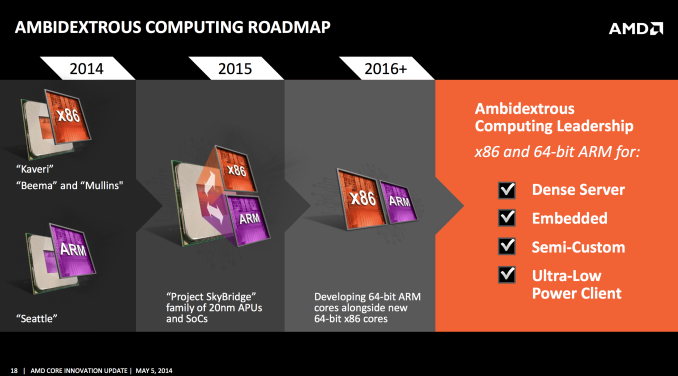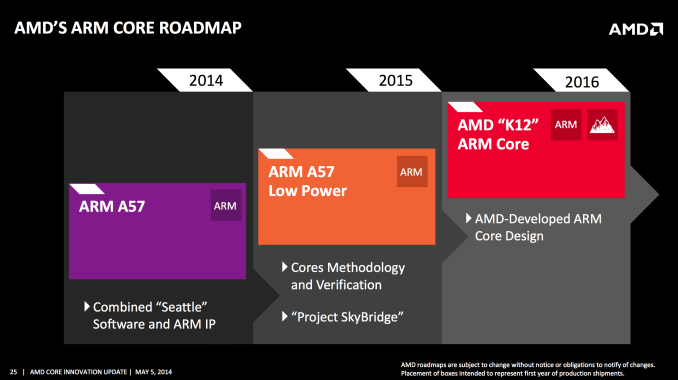AMD To Produce First Joint ARM + x86 Platform and Chip, & SkyBridge
Posted on May 6, 2014
AMD announced Monday their upcoming plans for "SkyBridge," due to come out in 2015, and customized AMD/ARM cores ("K12") due in 2016. The 2014 road map AMD laid-out is promising across mobility and x86 applications (more on the latter in a future post). AMD is the first company that is minimizing costs by having a single motherboard for both ARM and x86 architecture, giving more potential reach for consumers and sticking with AMD's effort to let buyers keep their board upon upgrading CPUs. AMD has always owned a bit of a niche market (except the days when they dominated with the Athlon 64), but they are expanding their strategy to one of differentiation from the norms of semiconductors.
SkyBridge is a pair of 20nm pin-compatible ARM- and x86-based SOCs and APUs. This will create the option of running both on the same motherboard. The initial focus is for a low power, small form factor products, similar to our $475 PC build guide we just posted. The ARM SOCs—based on the Cortex A57 CPU with AMD’s GCN core architecture—are the first AMD chip to feature full support for Android OS. This may be an indication of a move by AMD to reach into the mobile markets, as was attempted two years ago with Temash on tablets and convertibles; similar moves have been successfully made by AMD in the past, like Jaguar on the PS4 and Xbox One.
2016 will show even more of a push to utilize this dual approach (AMD calls it "ambidextrous") as they release the “K12” 64-bit ARM cores and currently unnamed x86 cores. Analyst Patrick Moorehead of Moor Insights & Strategy had this to say of the announcements:
"AMD has a real unique offering here. They're the only one doing x86 and ARM and doing it with a single socket for each platform. That saves money and provides flexibility for ODMs and OEMs."
It is unclear at this time what AMD's plans are for the consumer market; however, utilizing ARM and x86 cores on a joint-chip, a custom system can be built that is compatible with almost every OS out there. NVidia would do well to partner to build a similar platform for their Tegra, which is not x86-friendly, but still very powerful. Ultimately, AMD may have found a niche in differentiation that will keep the company in healthy shape for now.
- Scott "Abibiliboop" Griffin.


